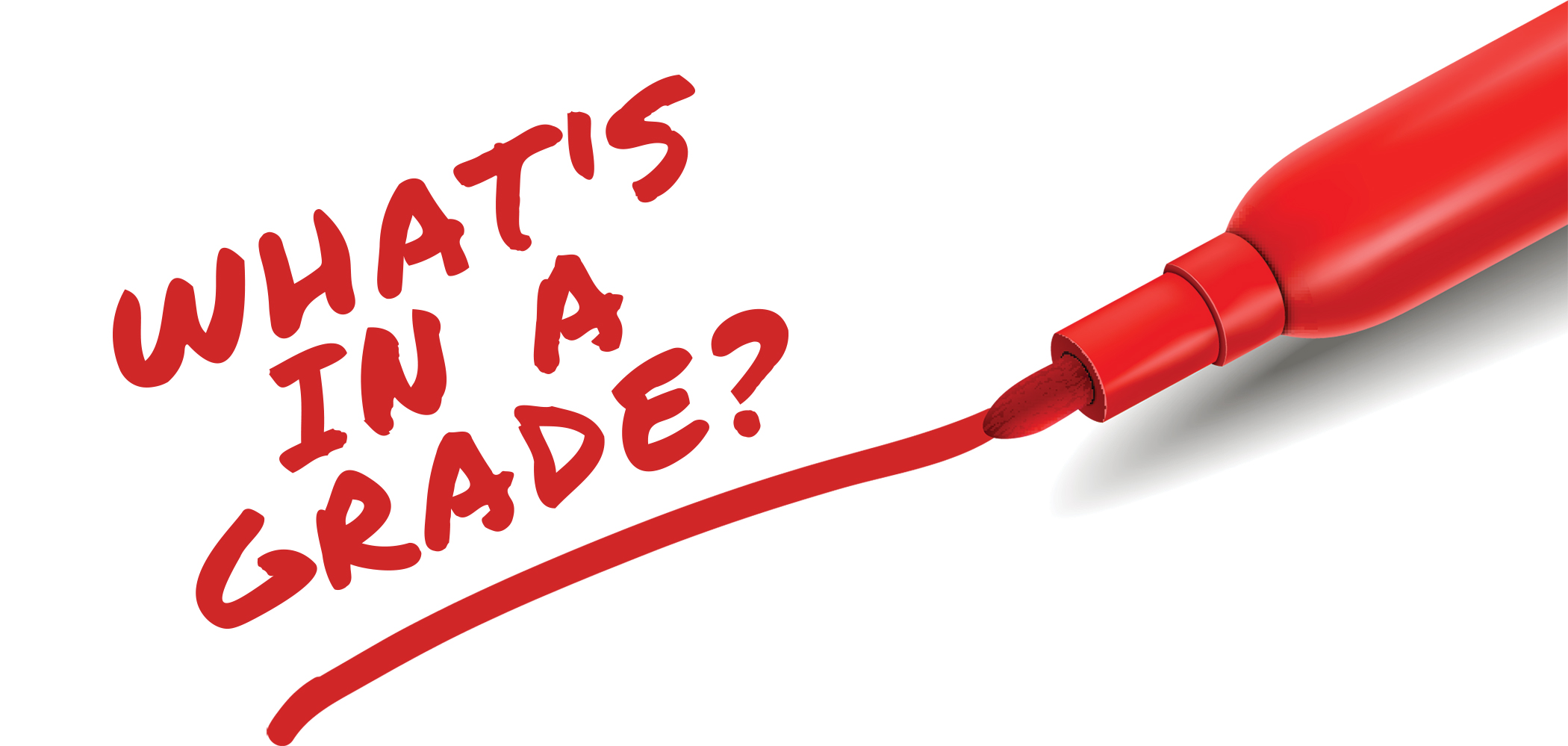

David, a high school senior, struggles to complete his homework assignments weekly due to his part-time job and other responsibilities like watching his younger siblings while their parents work. He performs well on in-class quizzes and tests, but does not often participate in class discussions due to feelings of shyness and exhaustion. When his teacher offers extra credit, it often involves attending events outside of school time — an impossibility with all of David’s other commitments. Due to all these factors, David has a low GPA and worries he might not get into college.

“While we may be using the most innovative and thoughtful teaching and learning practices and the most culturally responsive and sustaining pedagogy, diverse curriculum and innovative structures for our school day, as long as we continue using the traditional grading practices, we can be undermining all of it when it comes to reporting student achievement,” said Joe Feldman, CEO of Crescendo Education Group, which facilitates educator training and professional development around equitable grading.
Oftentimes, a student’s grade will include any number of metrics, including how they score on assessments, homework and their behavior. Some teachers average work, grade on a curve or give extra credit opportunities. All of these factors can work together to mask a student’s true achievement level.
Problematic practices in grading identified by Feldman and other researchers include incorporating behavior in grades, averaging a student’s scores, grading on the traditional 0-100 scale, assigning extra credit and grading homework.

- Statistically significant decrease in failure rates, and to a greater degree for historically underserved students
- Statistically significant decrease in grade inflation, and to a greater degree for white students and students from higher-income families
- Statistically significant increase in the correlation between teacher-assigned grades and standardized test scores, and to a greater degree for students from poorer families
- Improved learning relationships between teachers and students
- 98 percent of teachers who participated in professional learning on improved equitable grading would recommend it for other teachers
Much like schools’ disciplinary actions have been shown to disproportionately affect African American, Latino, low-income and students with disabilities — often due to implicit biases — including criteria such as “effort” in a grade is subject to the same biases. “I would argue that our schools are actually designed to have achievement disparities — despite our best efforts as individuals,” Feldman said. “We need to think how grading is a key part of this inherited system and perpetuates disparities.”

“Right now, in December 2021, there are high schools around the country that have 50 and 60 percent failure rates,” Reeves said during a grading roundtable discussion hosted by EdSource. “If we don’t fix this right now, we have a multi-decade, multi-generational challenge ahead of us. The most effective way to do this is through improved grading. And the way you improve grading is you say, ‘I don’t care if you failed three months ago, it’s how you finish the race, not how you start.’ If you get rid of the average, you will have a lower failure rate and you’ll not only save kids this year, you will save a generation of kids.”
Connected to the issue of averaging grades is the traditional 0-100 grading scale. “The zero to 100 scale is a scale that has no pedagogical justification and is actually disproportionately oriented toward failure,” explained Feldman. “There’s really two-thirds of the scale to describe subpar performance, and a third to describe success. When a student performs low, like a zero especially, it disproportionately punishes the student.” Feldman and other researchers have found that a 0-4 scale more accurately measures student performance.
In addition, research has shown that failing an assignment or course affects student motivation and self-esteem and increases their risk of dropping out. A Century of Grading Research found that failing a course in sixth grade or ninth grade is highly correlated with dropping out of high school.
“The most equitable grading practices are ones that accurately reflect a student’s academic performance; are bias resistant, which means they counteract institutional biases and prevent our implicit biases from infecting the grade; motivate students intrinsically and build their skills at self-regulation,” said Feldman.
To do this involves eliminating some or all of the practices outlined previously and adding two key elements — standards-based grading, also called mastery-based grading, and allowing retakes. According to researchers, standards-based grading emphasizes communicating student progress in relation to grade-level standards that describe performance using ordered categories (e.g., below basic, basic, proficient, advanced), and involve separate reporting of work habits and behavior.
“The purpose of grading is not to rank, rate, sort, humiliate or punish — the only purpose of grading is to give feedback to improve teaching and learning,” said Reeves.
Evaluations of equitable grading practices have found that they yield lower failure rates because they reduce the biases embedded in traditional grading, more accurately reflect academic achievement of historically underserved students, and create more motivation and opportunities for success. Additionally, because equitable grades do not include behaviors and extra credit, grade inflation is also reduced, particularly for more privileged students. “The research is overwhelming that extra credit disproportionately rewards students with more privilege and resources and punishes those who don’t have those,” said Feldman.
For many districts, “creating the conditions” first required understanding and buy-in from the board and other administrative leaders. Both Placer Union High School District and San Leandro Unified School District began their journeys by questioning why students were receiving so many D’s and F’s.
Placer Union HSD began working with the Crescendo Education Group in 2016 to examine and address the inherent inequities in traditional grading practices. The district had been working to address failing grades with academic goals and interventions but began to realize that grading practices were becoming a barrier to student achievement. Beginning with an administrative retreat, which included the board, Feldman explained to school leaders how traditional grading practices can be barriers to equity and do not work for all students.
The next step was to implement some of these practices, which meant bringing in teachers. Placer Union HSD Deputy Superintendent of Educational Services Jeff Tooker presented the tenets behind equitable grading at a districtwide professional development day and asked for volunteers to work directly with Feldman the following year.
“We had over 30 teachers sign up for that first year. We did a lot of action research and we saw results. D’s and F’s were going down and grade inflation with A’s was going down,” he said. “I used that first group of teachers to guide us as an advisory panel and they were adamant we should continue to get to a critical mass.”
Placer’s second cohort doubled in size and the district was in the process of training the third when COVID-19 shut down campuses, but they have come back in person with equitable grading practices in place. Along the way, the board gave direction to draft a new policy that reflected the district’s model of equitable grading.
“We crafted a new policy that supports the tenants of accurate and equitable grading,” said Tooker. “The pillars are grades should be accurate, equitable and then the big one, grades should motivate in a growth mindset sort of way. There are a lot of grading practices that just don’t give kids hope, where immediately they feel like failures and they get the zero on the very first assignment in the class.”
Trustee Maureen “Mo” Ward explained how one of the more controversial elements of equitable grading — not grading homework — interacts with retakes, giving students ownership of their education, but not a free pass. “If you can do well on the test without doing much of the homework, that’s fine,” she said. “But then if you don’t do well and want to retake that test, you have to show me that you have done the work to get ready to take that test the next time. You’re responsible for your own grade and you have an ability to improve it.”


“Our teachers are the heart and soul of who’s going to be changing their practice and incorporating all the new strategies. And this is really hard work,” Patel said. “It brings up a lot of your own bias. It brings up the way that you were graded growing up, good or bad, and how you’ve learned to think about what mastery is, what merit is, all those kinds of things. And so, it becomes really personal work and emotional. And from those places, resistance can develop. We just thought right from the onset, let’s hear what the concerns might be because we know how deeply personal grading has been over time. Plus, the format of the trainings — dedicated, half-day sessions — requires a lot of negotiation and operational and tactical know-how. Getting all that in the open and having everyone in on it is really helpful. And we knew we wouldn’t solve this in a one-off training or even one year — we were at it for five full years.”
San Leandro Unified used a similar onboarding model as Placer, starting with voluntary teams of teachers that piloted equitable grading practices before a formal policy was put into place. Teacher cohorts also helped to refine structures, such as how to do retakes on tests. Teachers are learning to reframe how assessments are given, making them more modular so that students can retake certain sections they need to focus on rather than the entire test again. Patel addressed the skepticism inherent in some teachers’ objections that giving retakes or not grading homework will result in students not trying.
“Then we get into conversations about what is motivation? What is incentivization? It’s really great because those are conversations that are fun to have and to let yourself be in a growth mindset around them. Some teachers say, ‘Yeah, I don’t grade the homework. I expect it, but I don’t grade it.’ Or, ‘I have a different way of saying that’s part of your habits and your approach to learning, but not your mastery of learning.’ So this idea of teasing out the habits and approach-to-learning grade versus the mastery grade so that kids can really show you what they know.”
“Lindsay’s performance-based system essentially honors the principle that people learn in different ways and in different timeframes, and most traditional models do not,” said Lindsay USD Superintendent Tom Rooney. “In our system, it’s a learner-centered model, in that learners progress through our system based on their competence. Not necessarily on their grade or on their age, but ensuring that they are demonstrating competence in the curriculum that we’ve designed. And we essentially have a continuum of learning that goes from the very earliest level as transitional kindergarten learning all the way until you leave our system. And it’s in every content area — science, social studies, all the electives at the high school. Learners essentially know where they are in their learning and they’re getting feedback along the way. It’s less important about what their grade level is or what their age is — what’s more important is they’re demonstrating competence in all the required learning.”

Each district in this story experienced a decline in D’s, F’s and inflated A’s after implementing an equitable grading system. Reeves of Creative Leadership Solutions acknowledges that the work can seem overwhelming, but it doesn’t have to be.
“There is a lot of talk about grade reform that is too complicated. Let’s keep it simple. All we want to do is tell our teachers and our students how we can improve teaching and learning,” Reeves said. “In my judgment, if you take just two things away from these strategies: let’s evaluate our students against a state standard and let’s make sure we do this in a mathematically accurate way that respects teacher feedback — the 0-100 scale is mathematically inaccurate. If you do those two things, you will have fewer failures, better engagement and better discipline than you’ve had before,” Reeves continued. “My research says that when we get grading right, it improves classroom climate, culture, discipline, behavior and attendance — it’s good for everybody.”
Kimberly Sellery is Editorial Director for California Schools.